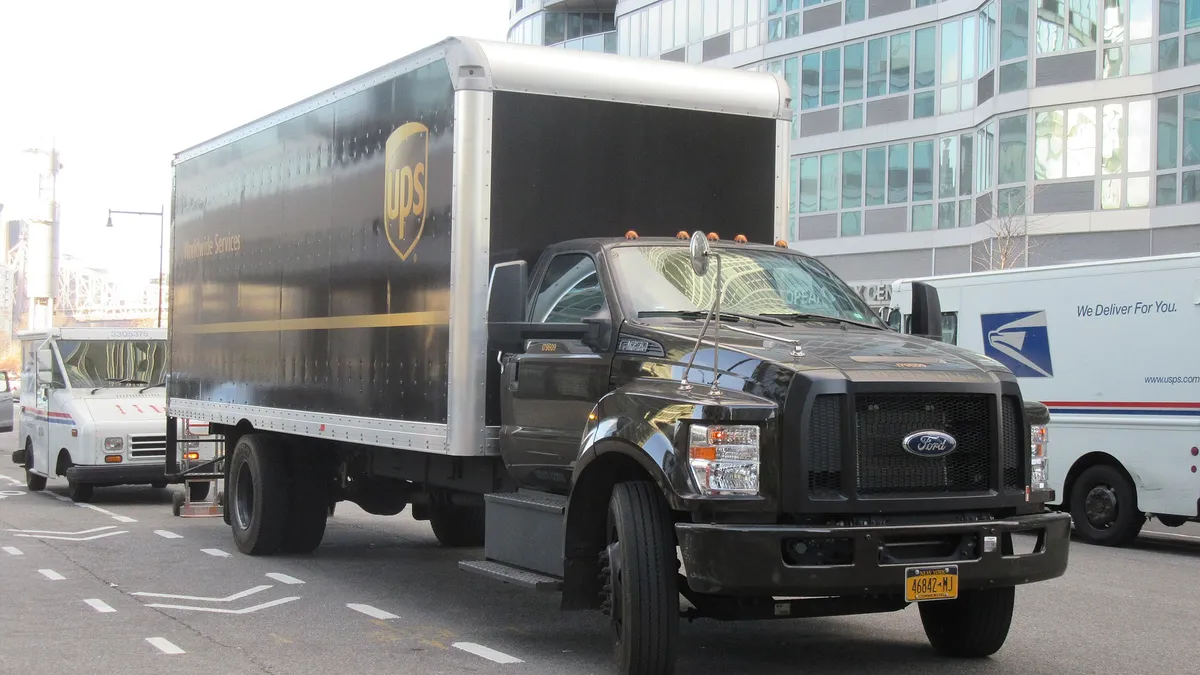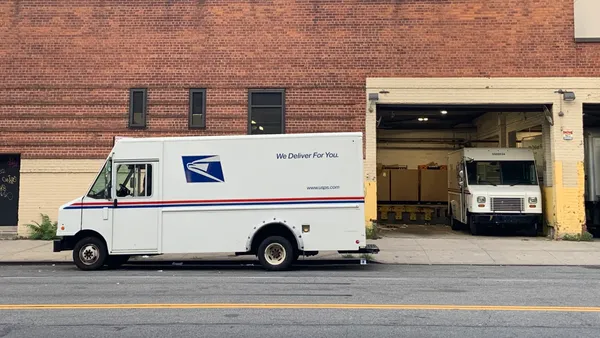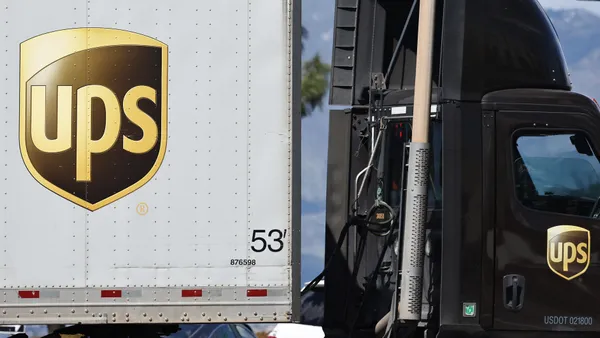Dive Brief:
- UPS will reinstate its pre-holiday peak surcharge rates beginning Jan. 17, the carrier announced Wednesday.
- The January surcharges cover UPS Ground Residential Service and UPS SurePost, as well as large packages and those that require additional handling. The surcharges on Ground Residential and SurePost packages will apply to any shipper that has shipped more than 25,000 packages in any single week since February. In May, the surcharges applied to any shipper moving 25,000 packages more than its average volume in February.
- UPS will also lower peak surcharges on shipments from China to the U.S., beginning Dec. 27, from $1.43 to $2.27 per pound, depending on the service, to $1.09 to $1.93, respectively.
| Service level | Effective date | Surcharge |
|---|---|---|
| UPS Ground Residential | Jan. 17 until further notice | $0.30 per package |
| UPS SurePost | Jan. 17 until further notice | $0.30 per package |
| Large packages (all service levels) | Jan. 17 until further notice | $31.45 per package |
Dive Insight:
As UPS and FedEx are in the middle of a massive vaccine distribution operation, the carriers are getting affairs in order for their core business come the new year.
This time, UPS' surcharges are based on flat volume, rather than relative volume surge as they were in May, meaning it's possible more shippers may be subject to surcharges come January. And shippers should view "until further notice" to mean "forever," at least for planning purposes, according to Matt Hertz, co-founder of e-commerce consultancy Second Marathon.
FedEx made a similar announcement last week, extending surcharges beyond January, but the surcharges and the services they cover are slightly different.
UPS is reverting to the surcharge rate it put in place at the end of May. FedEx has chosen a rate lower than the one currently in place to cover holiday volume, but it's more than double the rate FedEx charged on SmartPost volume in May. UPS, however, will extend the open-ended surcharges to its Ground Residential service whereas FedEx has not — yet.
"I would be very surprised if FedEx does not continue Residential Peak Surcharges, at least for Home Delivery, as it was made very clear on their earnings call last week that they 'expect to continue to get a premium' for this service," Nate Skiver, founder of consulting firm LPF Spend Management, said.
"Looking ahead, our peak plans, volume management and surcharge approach will also help promote a more optimized volume mix," said UPS Chief Financial Officer Brian Newman on the carrier's October earnings call.
The structure of UPS' January domestic surcharge removes the element of relative volume surges, instead moving toward a flat high-volume threshold, which could be an indication that the carrier expects still-elevated but steadier volume in 2021.
"We’re entering a period of sustained accelerated activity, but for all of us, I hope we won’t see the same significant step change next year as we did this year," Hertz said.
The extension of peak surcharges into 2021 for an indeterminate period could solidify shipper trends that have developed in response.
The first is carrier diversification. Regional carriers have risen to new prominence in an environment where UPS and FedEx feel empowered to pick which volume they carry.
It will also likely further collide the gig economy courier service with small parcel logistics, as surcharges make the latter more cost-competitive. Pitney Bowes recently made this move, offering same-day service through its SendPro parcel platform.
Surcharges, along with hundreds of other details in a small parcel contract, are technically subject to negotiation, but Hertz said, "I still haven’t spoken to any shipper who has successfully negotiated down these rates."














